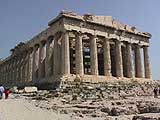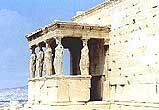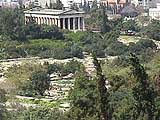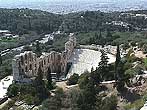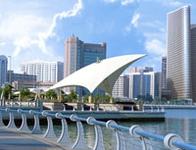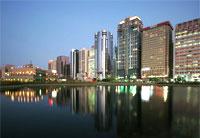Puerto Rico Basic Travel Information
Location: Between the Caribbean Sea and the North Atlantic Ocean, east of the Dominican Republic
Size: Total area is 3,508 sq. miles
Capital: San Juan
Language: Spanish and English
Religions: Mainly Roman Catholic
Currency: The U.S. dollar is the official currency
Telephone/Area Code: 787 or 939
Tipping: If service charge is not included, tip 15 to 20 percent
Weather: Average year-round temperatures are in the mid-80s. Hurricane season is June to November
Puerto Rico Activities and Attractions
Be sure to stroll around the historic district of Old San Juan with its pastel-colored Spanish-style homes, and visit El Morro, a fort built by the Spanish in 1540. El Yunque Rain Forest, located 24 miles southeast of San Juan, is another must-see, with wonderful hikes that take you past waterfalls and natural pools. Mona Island offers snorkelers and scuba divers exceptional visibility and a huge variety of marine life including turtles and octopuses. Hope for a cloudy night so you can take a mystical, nighttime swim in the bioluminescent bay on the island of Vieques or in Fajardo.
Puerto Rico Beaches
Popular Luquillo Beach near San Juan is great for families, with excellent facilities and lots of restaurant options. On the island of Culebra, Playa Flamenco is considered one of Puerto Rico’s loveliest beaches, with soft, pure white sands that strike a vivid contrast to the surrounding green foliage; Playa Zoni is also beautiful, and more secluded. Boquerón Beach, near the charming village of the same name, is more than a mile long, but can get crowded on weekends.
Puerto Rico Hotels and Resorts
Puerto Rico offers plenty of resorts and hotels, many on or near a beach. The Horned Dorset Primavera, located in the surfing hotspot Rincon, is one of the most romantic. If you’re the type to get bored easily, book a stay at the Wyndham El Conquistador Resort & Golden Door Spa, where activities include watersports, horseback riding, golf, tennis, a spa, a casino, a marina, and, for escapists, a private island. Lower-key options in Puerto Rico can be a great way to save money; these include guesthouses, villas and paradores (country inns)
Puerto Rico Restaurants and Cuisine
Puerto Rican restaurants serve traditional Criolla food (a blend of Taíno, Spanish and African influences) as well as just about every international cuisine. Mofongo, a favorite island dish consisting of mashed green plantains fried with garlic and other seasonings, can be served plain or stuffed with meat or seafood. Look for restaurants participating in the Mesones Gastronomicos Program if you want to sample traditional dishes. San Juan has a wonderful selection of restaurants, from upscale fine dining to familar U.S. chain eateries.
Puerto Rico Culture and History
Following Christopher Columbus’ arrival in 1493, the local Taíno Indians were first enslaved, then decimated by disease. African slaves took their place as laborers. The island was ruled by the Spanish until 1898, when Spain ceded the island to the United States. Puerto Ricans became U.S. citizens in 1917, and in 1952, Puerto Rico became a commonwealth of the United States. Present-day Puerto Rico is a major tourist destination, and Puertorriqueños take pride in their unique combination of heritages: African, Taíno (Amerindians), Spanish and North American.
Puerto Rico Events and Festivals
The Casals Festival, a classical music festival in late February/early March, draws many international guest conductors, orchestras and soloists to San Juan's Performing Arts Center. Puerto Rico’s Carnival features float parades, dancing, and street parties and takes place the week before Ash Wednesday. June’s Heineken Jazz Festival is a big draw, and November marks the start of baseball season. Occasionally, you may find a Major League Baseball player doing a stint with a Puerto Rican team in the off season.
Puerto Rico Nightlife
Whether you’re looking for bars, salsa, casinos, performing arts or discos, San Juan is the place to go. Be warned, though, that things heat up very late here, and keep on going until the wee hours. Most of the hotels in Condado-Isla Verde have casinos; check out the Ritz-Carlton. In Old San Juan you’ll find many bars lining Calle San Sebastián. Pick up a copy of Qué Pasa, the visitor's guide, for events listings.
